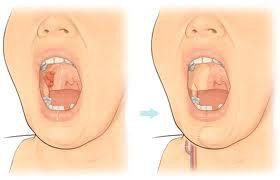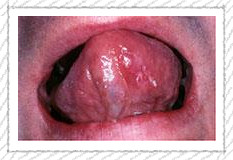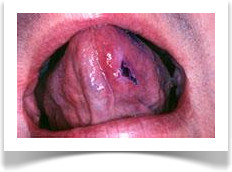Reduce
the risk of developing oral cancer
the risk of developing oral cancer
{{ name }}
Mouth Cancer Screen ViziLitePlus®
What is an oral cancer?Oral cancer is the abnormal growth of cells in the oral cavity. This may include the lips, tongue, mouth and throat. There are two types of oral cancer: the type that develops in the mouth, called oral cavity cancer; and the type that develops in the back of the mouth at the top of the throat in an area referred to as the oropharynx, called oropharyngeal cancer. What are the risk factors for oral cancer?
Tobacco use, such as cigarettes, cigars or chewing tobacco, and heavy drinking are the most significant risk factors for developing oral cancer, Prior occurrence, family history of oral cancer and being over the age of 40 also increase your risk for developing oral cancer, Infection with the human papillomavirus, the virus responsible for cervical cancer in women known as HPV, may also increase a person’s risk for oral cancer, Twenty five percent of oral cancer patients have no risk factors for oral cancer. What are the treatment options for oral cancer?
Early detection can significantly change what treatment options a doctor may decide to pursue. Treatment for early-stage oral cancer usually involves a surgical resection of the diseased tissue. If the cancerous tissue is large, surgery to remove the diseased tissue may involve removing a large portion of the tongue, lower jaw or throat. When the disease metastasizes, or spreads, to other areas of the body, your doctor may require chemotherapy or radiation in addition to surgical removal of the diseased tissue.

What can people do to reduce their risk of developing oral cancer?
The single most important way to reduce the risk of developing oral cancer is to reduce the risk factors, stop using tobacco and evaluate drinking habits. If a person uses tobacco or is a heavy drinker and is over the age of 40 their dentist should evaluate the oral cavity annually with a visual examination, including the use of an adjunctive screening device to increase the visibility of potentially cancerous tissue. If a person has one of the additional risk factors for oral cancer, they should speak with their dentist about concerns for developing oral cancer.
Mouth Cancer Screen ViziLitePlus
Better screening saves livesViziLite® Plus is the first adjunctive oral cancer screening system that was developed to help oral healthcare professionals identify, evaluate, monitor and mark abnormal oral cell lesions suspicious for pathology including precancerous and cancerous cells that may be difficult to see during a regular visual exam. ViziLite® Plus Advantage:
• Quick and easy-to use system that incorporates seamlessly into your standard visual examination - procedure only takes 2 minutes to complete • Minimized outer dimensions to enable easier access to see and focus light inside the oral cavity • Disposable technology eliminates cross-contamination and improves infection control • Patented and clinically proven technology that has been helping healthcare professionals for more than a decade. • A clinical study has shown that the use of ViziLite Plus after a conventional visual examination resulted in: - NO FALSE NEGATIVE OUTCOMES, meaning in this clinical study ViziLite® Plus with TBlue® identified every lesion that had precancerous or cancerous cells. - SIGNIFICANTLY REDUCED the number of false positive lesions identified during standard visual examinations - limiting the number of biopsies that may have normally been performed.
 What you see under normal light
What you see under normal light  What you see using ViziLite Plus
What you see using ViziLite Plus
